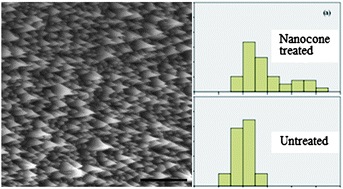A diamond nanocone array for improved osteoblastic differentiation†
Abstract
Efficient delivery of biomolecules to cells is of great importance in biology and medicine. To achieve this, we designed a novel type of densely packed diamond nanocone array to conveniently transport molecules to the cytoplasm of a great number of cells. The nanocone array was fabricated by depositing a thin layer of diamond film on a silicon substrate followed by bias-assisted


 Please wait while we load your content...
Please wait while we load your content...